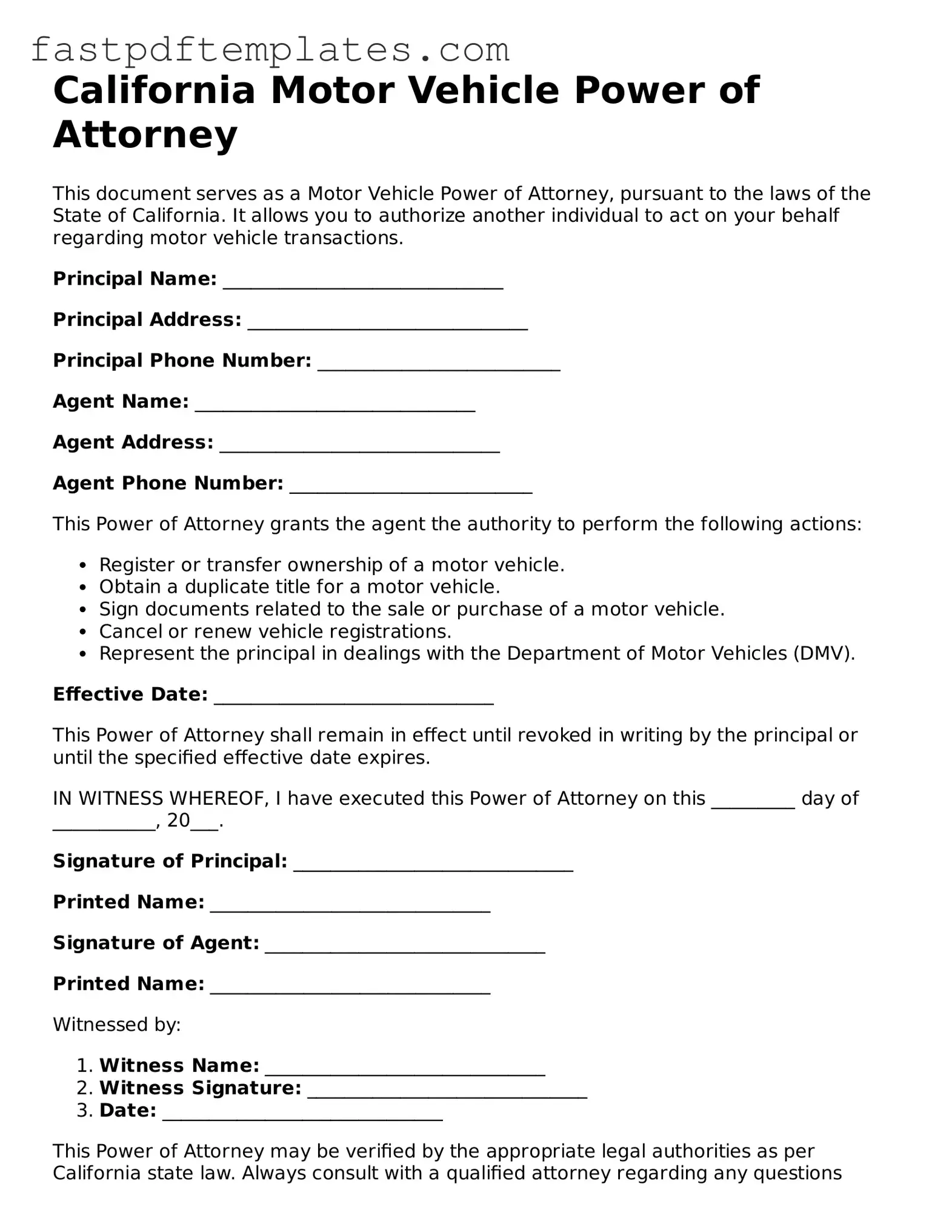California Motor Vehicle Power of Attorney
This document serves as a Motor Vehicle Power of Attorney, pursuant to the laws of the State of California. It allows you to authorize another individual to act on your behalf regarding motor vehicle transactions.
Principal Name: ______________________________
Principal Address: ______________________________
Principal Phone Number: __________________________
Agent Name: ______________________________
Agent Address: ______________________________
Agent Phone Number: __________________________
This Power of Attorney grants the agent the authority to perform the following actions:
- Register or transfer ownership of a motor vehicle.
- Obtain a duplicate title for a motor vehicle.
- Sign documents related to the sale or purchase of a motor vehicle.
- Cancel or renew vehicle registrations.
- Represent the principal in dealings with the Department of Motor Vehicles (DMV).
Effective Date: ______________________________
This Power of Attorney shall remain in effect until revoked in writing by the principal or until the specified effective date expires.
IN WITNESS WHEREOF, I have executed this Power of Attorney on this _________ day of ___________, 20___.
Signature of Principal: ______________________________
Printed Name: ______________________________
Signature of Agent: ______________________________
Printed Name: ______________________________
Witnessed by:
- Witness Name: ______________________________
- Witness Signature: ______________________________
- Date: ______________________________
This Power of Attorney may be verified by the appropriate legal authorities as per California state law. Always consult with a qualified attorney regarding any questions related to your specific situation.
